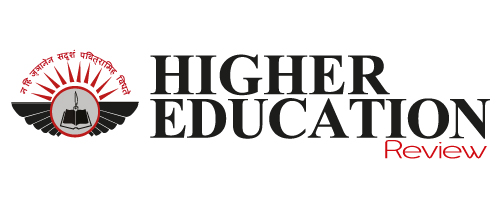Strategies for preparing High-Potential Employees for Leadership Roles
 Ganapathi S Subramanian is an accomplished HR leader with extensive experience in Talent Acquisition, Engagement, Development, HR Analytics, and general HR operations. He has held key roles at TVS, PepsiCo, and Britannia, introducing innovative HR strategies. Currently, he heads the HR function at Sundaram Home Finance Ltd., driving strategic HR initiatives and organizational excellence.
Ganapathi S Subramanian is an accomplished HR leader with extensive experience in Talent Acquisition, Engagement, Development, HR Analytics, and general HR operations. He has held key roles at TVS, PepsiCo, and Britannia, introducing innovative HR strategies. Currently, he heads the HR function at Sundaram Home Finance Ltd., driving strategic HR initiatives and organizational excellence.
In today’s dynamic business landscape, the need for agile and capable leaders has never been greater. Organizations that invest in identifying and nurturing high-potential employees (HiPos) secure a competitive edge by building a strong leadership pipeline. However, preparing these individuals for future leadership roles requires a deliberate and multifaceted approach.
One of the first steps in this process is developing personalized growth plans for high-potential employees. These plans should be based on thorough assessments of their strengths, areas for improvement, and career aspirations. By aligning individual goals with organizational needs, companies can create a tailored learning journey that fosters both professional and personal development.
Exposure to diverse functions through job rotation is another powerful strategy. By working in various departments, HiPo’s gain a comprehensive understanding of the organization, build cross-functional relationships and develop a broader perspective on business challenges. This hands-on experience is invaluable for cultivating strategic thinking and problem-solving skills.
Mentorship and coaching play a pivotal role in shaping future leaders. Pairing HiPos with senior leaders provides them with guidance, feedback, and insights into the complexities of leadership. A strong mentor can help them navigate challenges, build confidence, and sharpen decision-making skills. Additionally, leadership development programs, which include workshops, simulations, and case studies, provide structured learning experiences that prepare HiPo’s for real-world leadership scenarios.
Shadowing senior leaders is another effective way to expose HiPos to high-level decision-making. Observing how seasoned leaders handle complex situations, engage with stakeholders, and manage crises offers invaluable lessons that cannot be learned from textbooks alone.
Real-time action learning projects are equally crucial. By assigning high-potential employees to tackle business challenges, organizations encourage innovation and critical thinking. These projects not only develop technical and leadership skills but also build resilience and adaptability.
Stretch assignments that push HiPo’s beyond their comfort zones are instrumental in preparing them for leadership roles. These challenging tasks help them build confidence, develop new skills, and learn to manage ambiguity—all essential traits of successful leaders.
Equally important is the development of softs kills, such as communication, conflict resolution, and emotional intelligence. Leadership is not just about technical prowess; it’s about inspiring and motivating teams. Conducting workshops and interactive sessions on these skills equips HiPo’s to lead with empathy and effectiveness.
Networking opportunities, both within and outside the organization, also contribute to leadership readiness. Attending industry events, conferences, and forums exposes HiPos to diverse perspectives and helps them build professional relationships.
Continuous feedback and performance reviews ensure that HiPo’s stay on track in their development journey. Constructive feedback fosters self-awareness and encourages growth, while regular reviews provide opportunities to celebrate achievements and identify areas for improvement.
In conclusion, preparing high-potential employees for leadership roles requires a thoughtful and holistic approach. Investing in comprehensive and committed models for nurturing leadership talent not only fosters a culture of learning, collaboration, and mentorship but also empowers future leaders to thrive with confidence. This approach strengthens the internal leadership pipeline and drives meaningful business outcomes in today’s competitive environment.

